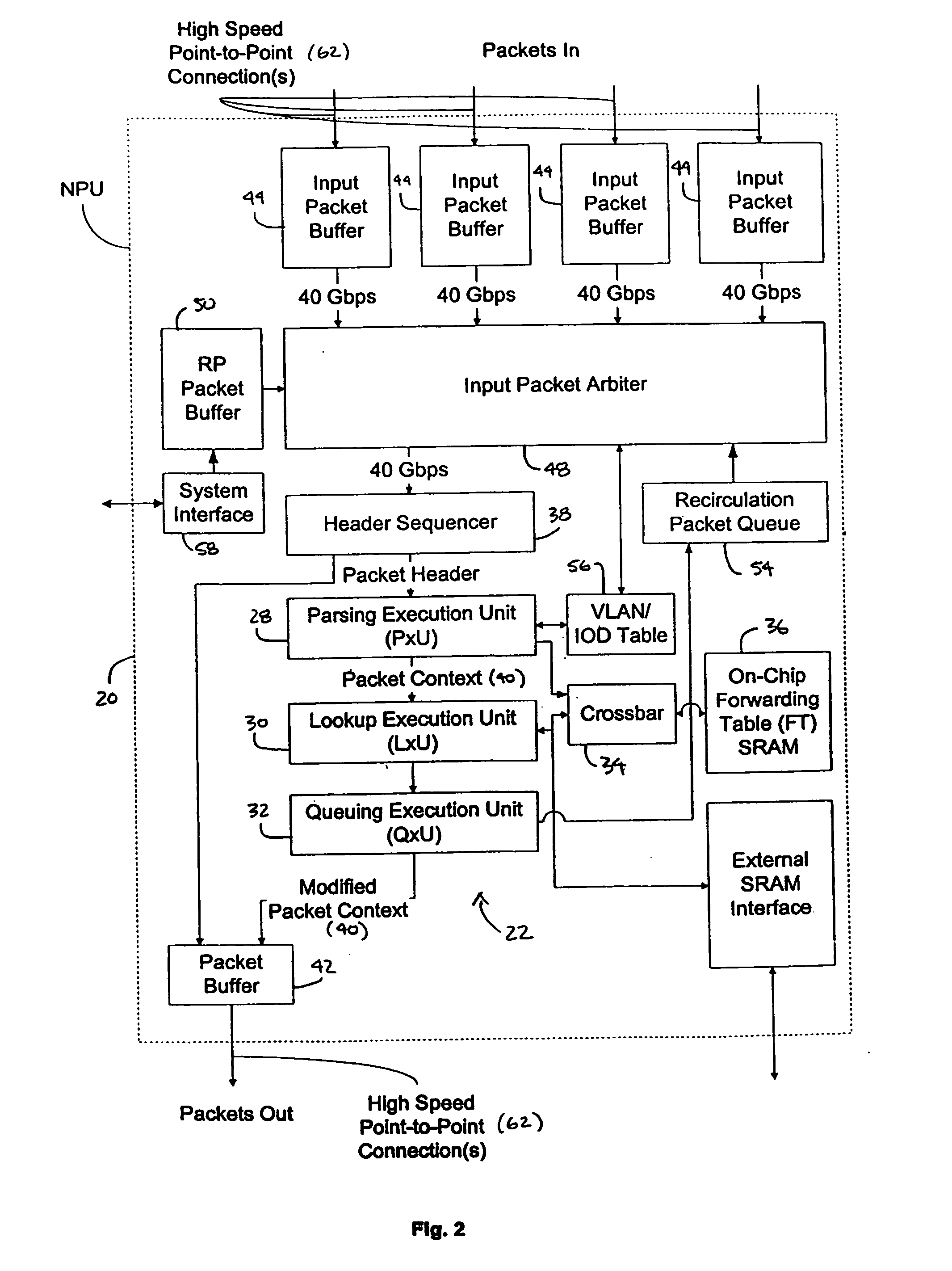Processing unit for efficiently determining a packet's destination in a packet-switched network
a packet-switched network and processing unit technology, applied in the field of microprocessors, can solve the problems of reducing affecting the overall performance of the transmission of the message, and the destination port of the router to which to send the received packet is a computationally intensive process, so as to achieve the effect of large input buffers
- Summary
- Abstract
- Description
- Claims
- Application Information
AI Technical Summary
Benefits of technology
Problems solved by technology
Method used
Image
Examples
Embodiment Construction
[0043] In accordance with embodiments of the present invention, disclosed herein is a network processing unit (NPU) 20 for determining the destination of a packet, the NPU employing a systolic array pipeline architecture. As used herein, the term “network processing unit” includes any processor, microprocessor, or other integrated circuit (or collections thereof)—such as a forwarding engine—which determines the destination of a packet. As will be described herein in greater detail, the NPU of one embodiment of the present invention employs one or more systolic arrays in various execution units of the NPU to perform various operations on a packet as the packet passes through the NPU.
[0044] As used herein, the term “systolic array” or “systolic array pipeline” includes, but is not limited to, a series or collection of stages wherein each stage may contain a register file and one or more functional units. In one embodiment, the data or program context being processed by the stages—whi...
PUM
 Login to View More
Login to View More Abstract
Description
Claims
Application Information
 Login to View More
Login to View More - R&D
- Intellectual Property
- Life Sciences
- Materials
- Tech Scout
- Unparalleled Data Quality
- Higher Quality Content
- 60% Fewer Hallucinations
Browse by: Latest US Patents, China's latest patents, Technical Efficacy Thesaurus, Application Domain, Technology Topic, Popular Technical Reports.
© 2025 PatSnap. All rights reserved.Legal|Privacy policy|Modern Slavery Act Transparency Statement|Sitemap|About US| Contact US: help@patsnap.com



